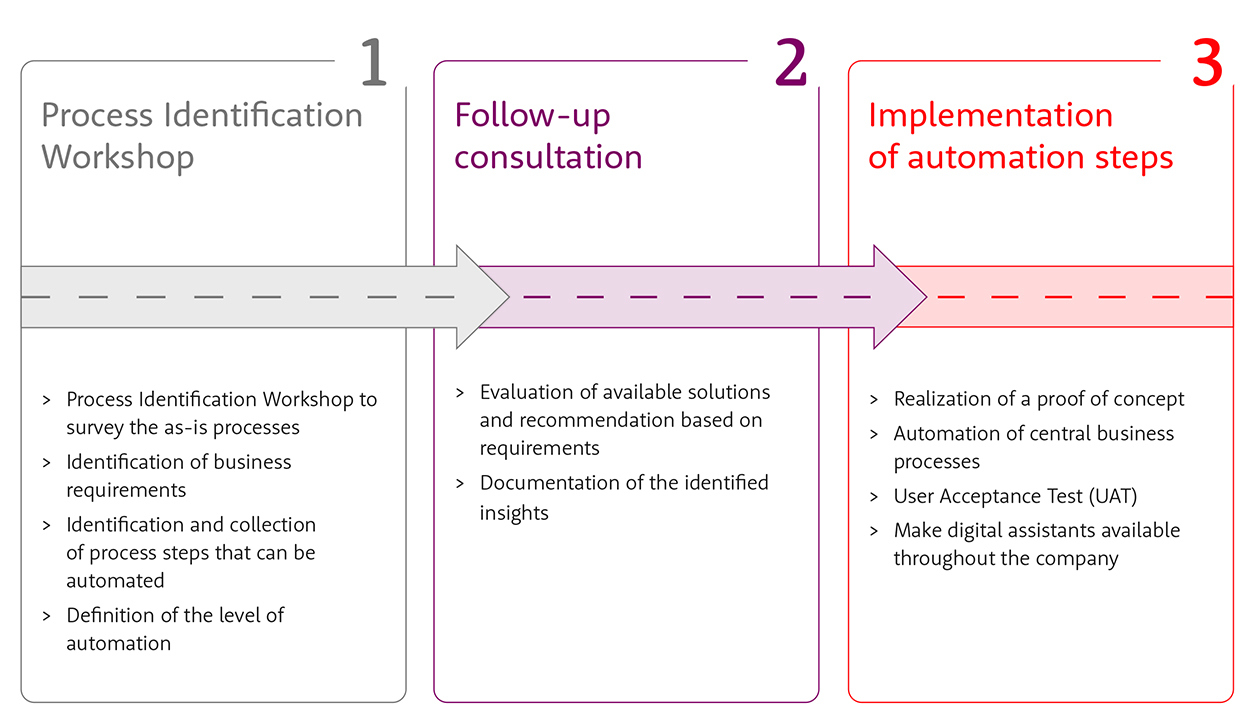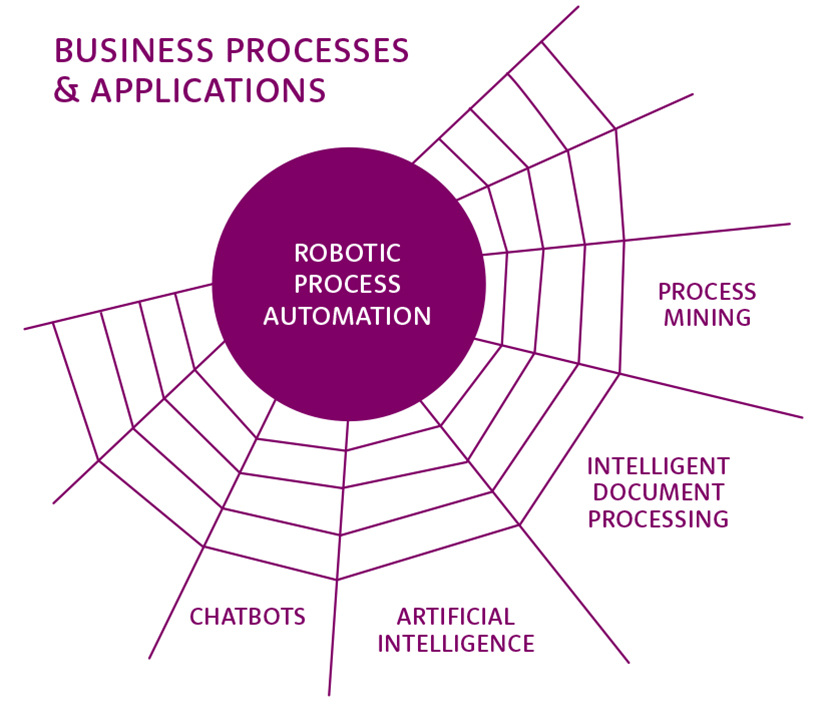Robotic Process Automation
Making life easier for employees through robotic process automation (RPA)
Whether validating documents, processing damage reports or performing credit checks, every sector has its own highly standardized routine processes. RPA can offer valuable support here. After all, automating tasks and processes with a digital assistant can free up time for more complex problems. But that is not the only reason why this technology is becoming increasingly popular: Other factors include the non-invasive integration into IT architecture and the quick return on investment (ROI). Better still, there is no need for IT departments to create an interface between the RPA solution and the existing application; all that is required are standardized processes with structured data.
Functions of the digital assistant
-
Reading structured data
-
Copying, pasting and moving data
-
Entering data into forms and applications
-
Independently performing computing tasks
-
Opening and processing various applications
-
Reading and writing data in databases or interfaces
-
Performing if-then decisions
Process automation
Is it always hard to get started? Not necessarily. That said, it can be a good idea to define the requirements, figure out which processes can be automated and identify any potential obstacles before embarking on an automation project. This can prevent missing use cases and interruptions in the process.
Our services – process identification workshops
The areas in which automation can make a difference are not always immediately apparent. That is why we offer a workshop to help you find suitable processes before your project begins. Our process consultants work with you to determine which processes are good candidates for automation and which level of automation is appropriate (full or partial automation). In this comprehensive consultation, our experts will then evaluate the right solutions to your needs and document the insights for your next steps in automation.
RPA – the spider in the web
RPA is the central tool for automation in a whole web of business processes and applications. Here, the digital robot acts as a communicator and application user, as well as an interface for further automation technologies like artificial intelligence (AI). Usually, the robot takes the role of the person performing one or more steps in a business process. You can automate these processes fully by combining RPA with technologies like intelligent document processing (IDP) or chatbots.
Processes in the spider’s web
As the spider at the center of the web, RPA is capable of automating any process. It is often better, however, to focus on certain areas. In particular, processes such as inventory management or changing and canceling orders can be automated quickly and therefore offer high potential for savings.
-
Inventory and shipping management
-
Test automation (mobile, desktop and web applications)
-
Automated invoice receipt/processing
-
Complaints management
-
Process mining, identification of processes
-
Automated order changing and cancellations
What can RPA do for you?
Automating processes can give your employees more time and space to dedicate to tasks that create more value and are more strategically important. Although many believe that the aim of RPA is to save money by cutting jobs, this is not the case: Instead, it offers a fast and long-term solution for company-wide automation, unlocking multiple benefits in the process:
What can RPA do for you?
Automating processes can give your employees more time and space to dedicate to tasks that create more value and are more strategically important. Although many believe that the aim of RPA is to save money by cutting jobs, this is not the case: Instead, it offers a fast and long-term solution for company-wide automation, unlocking multiple benefits in the process:
-
Cost reduction
Costs are reduced immediately through quick response rates, reduced rework rates and fewer manual activities. -
Accelerated processing time
A robot can perform processes much faster than a human worker. Its speed is limited only by the loading time of the applications. -
Availability (24/7)
Desktop robots are run in their own environment and are available 24 hours a day, 7 days a week and 365 days a year.
-
Increased employee satisfaction
RPA makes life easier for your employees by taking routine tasks, mass processes or unpopular jobs off their hands, therefore making them more satisfied with their jobs. -
Greater quality
Rules-based automation prevents errors and implements troubleshooting measures in line with regulations.
Partners
Any Questions?
If you would like to know more about this subject, I am happy to assist you.
Contact us







